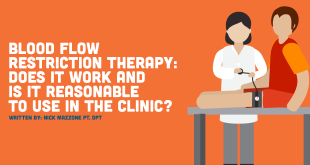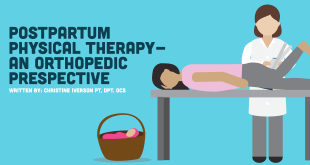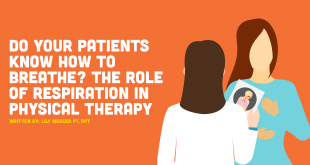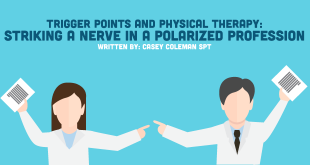“CSD-BSBU” = “Calm Shit Down – Build Shit Back Up”
The physical medicine and rehab professions involve utilizing various interventions to do the following:
- Rehab injuries
- Improve tissue tolerance
- Allow our patients to return to activity/improve their tolerance to activity
When “shit” is not calm, it usually means it is injured, inflamed, or painful. At the center of the matter when “shit” is not calm, it means that there has been some level of sensitivity that has developed, due to some patient-specific combination of nociception, neuropathic irritation, central modulation, peripheral sensitization, etc.
Usually, in an effort to “calm shit down” (CSD), our interventions include:
- Removing stressors, such as a repetitive motion, that are leading to tissue overload
- Educating the patient in an attempt to reframe psychosocial impact to pain
- Applying manual therapy to modulate the nervous system and pain experience
- Having the patient actively rest, with lower-level physical activities, while the body heals itself
After “shit” has calmed, we turn our focus towards “building shit back up” (BSBU).
To do this, we will usually prescribe various forms of exercise to load the individual and improve his or her ability to undertake the specific demands of his or her life. This steady progressive overload can work on a multitude of levels. It may improve strength, increase tissue loading capacity at the tissue level itself, decrease neural sensitivity, decrease fear of movement, improve confidence, allow for tissue inflammation to calm, improve central drive and motor patterning, and a variety of other factors we may not be aware of yet.
Tissue homeostasis background
From a bird’s eye view, this is what could be referred to as the “Tissue Homeostasis Model.”
Various researchers over the past 100 or so years have proposed similar models, so it’s clear it isn’t a new concept. Less sophisticated foundational versions of this can be seen in Wolfe’s and Davis’ law for different body tissues. However, in 2005, Scot Dye did an excellent job of tying this all together as it relates to the condition of patellofemoral pain syndrome (PFPS) in his paper “The pathophysiology of patellofemoral pain: a tissue homeostasis perspective.” This paper is a must read for anyone who deals with NMSK issues.
It doesn’t seem to be taught as a focal reasoning point in many schools, and I even got quite a few blank stares after I mentioned the topic in a presentation at the Texas State Physical Therapy annual conference last year.
In a nutshell, the take home definition is as follows:
All tissues can be viewed as a system designed to create, accept, transfer, and absorb biomechanical loads. The upper and lower limits of the tissue’s tolerance to load can be defined as its continuum of function. The upper side of the continuum represents a dosage significant enough to stimulate adaptation but still within the tissue’s ability to recover. Loads above this threshold will cause tissue damage at a higher rate than to which it can adapt. Loads below the zone of homeostasis will result in weakening or atrophy of the tissue. Loads within the zone of homeostasis cause no change positively or negatively to the tissue.
The two pictures below well represent this concept.


To make this clinical, we can work through an easy case study of PFPS directly based on the model Dye proposed in his paper.
Let’s assume we have a patient present with diffuse anterior knee pain. This pain started about 3 months ago, when the patient decided to start a running program to get rid of some extra he had gained over the last year. The patient reports that he first noticed the pain during a 2 mile run, but decided to keep running through it, as similar issues had just gone away in the past. He reports having a long history of being an avid runner, but various life factors prevented him from running in the last year, which has caused his weight gain.
- Pain is achy in nature with sharp twinges during squatting, stairs, lunging, etc
- Knee aches with prolonged sitting
- Patient reports that it “feels like it is deep down inside of [my] knee under the knee cap”
- Positive patellar grind test (Clarke’s)
Ok, this patient sounds close enough to your average PFPS case, right? Good, because where we are going with the treatment rationale is what really matters.
The Traditional Model
In our traditional physical therapy model, we would be taught that this is most likely to be a patellar tracking issue. The patella is no longer tracking smoothly in the groove, which is leading to break down of tissue on the posterior side of the patella. At this point, the traditional model assumes that we need to strengthen the VMO with ball between the knee squats and stretch out the IT band to normalize the knee biomechanics. It generally assumes that open kinetic chain (OKC) knee extension is a terrible idea because it increases retro-patellar compressive forces and will subsequently lead to further break down of cartilage on the patella. Traditional models may even get fancy and state that you need to use some leukotape to strap that patella across medially to normalize tracking mechanics. Finally, this model would state we need to strengthen the hip abductors in order to decrease dynamic valgus at the knee.
Performing stretching can certainly be part of a well-rounded program to rehab a patient from PFPS, but again it has been well documented that we cannot physically stretch the IT band. Strengthening the hip abductors actually has good level evidence to support its use in the treatment of PFPS, but further research shows strengthening alone does not alter dynamic valgus moment of knee biomechanics. Finally, tape very well could be a nice adjunctive treatment, but it has not been shown to be able to actually alter physical patellar tracking and likely works for a myriad of other reasons. These are a variety of interventions that we have observed to work in clinic and studies, but applied post-hoc reasoning to the why.
We are all likely familiar with this model:

This model is one that is hyper-focused on the minutia of biomechanics and excessive connections based on regional inter-dependence. Usually, but not always, this model has the habit of looking at the body through a lens of fragility and inability to adapt to the demands we impose upon it. It usually focuses heavily on unreliable visual inspection and invalid motion palpation testing. Do biomechanics matter? Absolutely! However, we must not overlook the amazing capacity of the body to adapt to stress, and we must not overlook the mounting body of literature calling into question many of the biomechanical theories we hold near and dear to our hearts.
A tissue homeostasis model
If we decide to look at this patient through a lens, examining tissue homeostasis, we may come to a different conclusion as to why this patient’s knee started to cause him pain. We know that he has recently been sedentary. We know that he has gained some weight. We know that he rapidly increased his loading, with the recent onset of a running program.
We also know he used to be a regular runner and that it’s not likely that his mechanics dramatically changed in a few years off regular running.
This is an ingrained motor pattern that is unlikely to dramatically change with a little bit of time off.
In the time off of running, and with the addition of “other life factors”, the patient experienced, it is likely that the patient’s zone of homeostasis shifted down and to the left on the curve. This subsequently means their tissues can tolerate less load before reaching outside of the beneficial zone of supra-physiologic overload and into the zone of structural failure or injury. When tissue reaches this level, we may reach the level of inflammation and/or nociception leading to the experience of pain.
The model below shows how the zone of homeostasis can shift after an injury has occurred. However, this shift is not reserved solely for injury. The exact same shift can occur simply due to detraining, sickness, co-morbid factors, sleep status, nutrition, mental health, etc.

As we can see in these graphs, when a patient’s envelope of function shifts down and to the left, the amount of load he or she can tolerate before activity becomes excessive is dramatically decreased. At this point we must intervene with applying and dosing in optimal loading to break the regressive path the patient is on.
Skillful loading
To drive the envelope of function up and to the right, the clinician must determine the optimal load that will adequately load and stimulate positive tissue change without superseding the tolerable limit and perpetuating a maladaptive response. This load reflects the individual’s current physical state, including, but not limited to, level of fitness, mental status, health status, sleep state, nutrition, predisposition to inflammation, pain catastrophization, etc. This is why progressive overload is so fundamental to exercise prescription. Due to the high degree of complexity and numerous relevant variables in play, we may set our sights upon a range of loading below the upper limit but sufficient to elicit positive adaptations. This term has come to be known as the “sloptimal zone”. This term respects that there is some wiggle room between the upper and lower limits of appropriate dosage.
As we steadily CSD and BSBU, we are, in essence, shifting the curve for envelope of function back up and to the right.
Conclusion
As you have hopefully come to see, the tissue homeostasis model is of the utmost relevance to everything we do in the physical medicine and rehabilitation realm. I want to close by urging you challenge yourself to think in terms of finding the “sloptimal” dosage when prescribing exercise to your patients. As a doctoral-level profession, boasting the self-proclaimed title of “movement experts,” we owe it to our patients and ourselves to think above and beyond the arbitrary 3×10 with yellow stretchy bands. It takes critical thinking and purposeful dosing of exercise to truly load our patients in a meaningful manner and elicit true positive tissue changes.
References
- Dye SF. The pathophysiology of patellofemoral pain: a tissue homeostasis perspective. Clin Orthop Relat Res. 2005;(436):100-10.
- Mirzabeigi E, Jordan C, Gronley JK, Rockowitz NL, Perry J. Isolation of the vastus medialis oblique muscle during exercise. Am J Sports Med. 1999;27(1):50-3.
- Chaudhry H, Schleip R, Ji Z, Bukiet B, Maney M, Findley T. Three-dimensional mathematical model for deformation of human fasciae in manual therapy. J Am Osteopath Assoc. 2008;108(8):379-90.
- Ferber R, Kendall KD, Farr L. Changes in knee biomechanics after a hip-abductor strengthening protocol for runners with patellofemoral pain syndrome. J Athl Train. 2011;46(2):142-9.
- Gigante A, Pasquinelli FM, Paladini P, Ulisse S, Greco F. The effects of patellar taping on patellofemoral incongruence. A computed tomography study. Am J Sports Med. 2001;29(1):88-92.
 NewGradPhysicalTherapy.com The Largest Online Resource For New Grad Physical Therapists
NewGradPhysicalTherapy.com The Largest Online Resource For New Grad Physical Therapists








